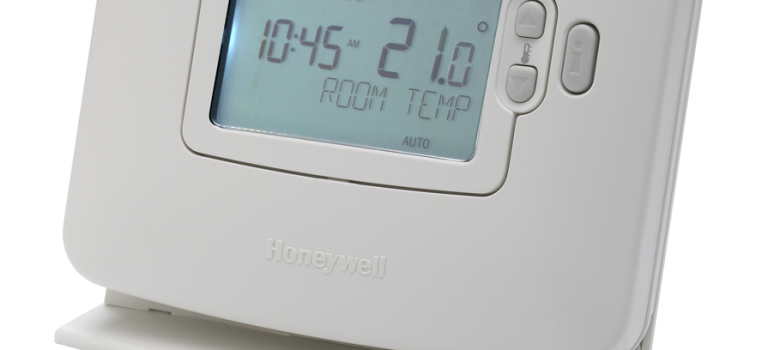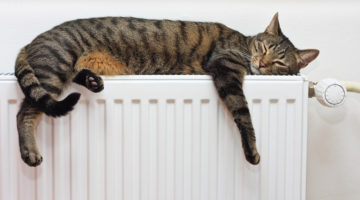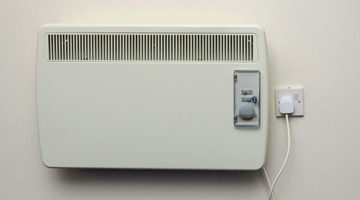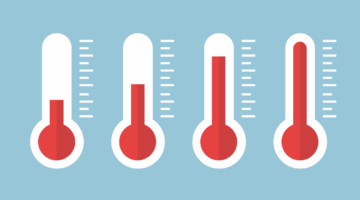
It may seem a simple device, but thermostats are often poorly utilised and misunderstood. In this blog we are going to look at some of the different types of thermostat available and how you should best use them in your home.
There are effectively 3 types of basic thermostat – dial thermostats, digital thermostats, and programmable thermostats.
Dial Thermostats
Dial thermostats will probably be the most familiar to people and are found in many homes up and down the country. Essentially they consist of a little dial found on the wall that can be turned to put the temperature up or down – they are the cheapest to install but in our opinion the most limited in terms of functionality.
Digital Thermostats
Digital thermostats are becoming far more common, and have a digital display telling you the desired temperature and usually the current temperature as well. Some will have some very basic programmability, like a night and day temperature.
Programmable Thermostats
These are the most advanced type of thermostat, and allow you to control the temperature by time of day and day of the week, usually with several different temperature settings in a single day. These allow you to be much more precise about the temperature you want and provide more flexibility. In addition, they can be used in conjunction with other heating controls to provide intelligent heating control. Technologies like the Nest, Heat Genius and Honeywell’s Evohome all are looking to take the programmable thermostat to the next level.
Quick Recap on how thermostats work
Regardless of which type of thermostat you have in your home, it will be working in tandem with your boiler to let it know when to turn on or off.
When you select the temperature on the thermostat, this is the temperature at which it will tell your boiler to fire up or switch off. If the house is cooler than this temperature, the thermostat will tell the boiler to turn on, hopefully warming up the house. As soon as the house hits the required temperature (as set on the thermostat), it will send a signal to the boiler to turn off.

These heating controls are absolutely key to reducing energy bills since they ensure the gas boiler is only running when it is absolutely needed.
How do I use my thermostat?
The most important thing to remember with your more basic thermostat is to set it and leave it. Set the temperature to the lowest comfortable temperature and you shouldn’t need to adjust it very often, if at all. Using the thermostat as a way to turn the heating on – by temporarily turning the dial up, can result in increased energy costs, and if you forget to turn it back down later, will waste a lot of energy.
To avoid this, we suggest starting at 18 degrees and turning up a degree each day until you reach a comfortable temperature. You should only really need to change the stat with the seasons from then on, and not just to turn the heating on on a cold day.
It is also really important to place the thermostat in a position where you have a free flow of air – if the stat is covered by curtains or furniture it will not work properly. So make sure it is in a nice open area like a corridor.
Using a programmable thermostat
Programmable thermostats offer a far more detailed control of the temperature. This is great because people tend to need different amounts of heat during your average day. At night, the thermostat can be set much lower, as the body needs less heat and you will be under a thick duvet anyway! First thing in the morning, we tend to feel the cold a lot more because our bodies have been in an inactive state all night – so this is a good time to have your thermostat set a little higher than usual. During the day you are likely to be out so the temperature can be set low again, and return to a comfortable temperature in time for you to return in the evening.
Of course, this is going to vary from house to house, and the programmer can be set in any number of combinations to best work with your lifestyle – but the principle remains the same.
When a thermostat is not enough
Whilst a good thermostat will really help you control your heating, it may be worth looking at thermostatic radiator valves (TRVs) for each of your radiators. TRVs let you control the heat in each individual room, so you are not overheating or underheating a room. You can also look at zone control and intelligent heating systems, which work especially well in larger properties to regulate the temperature in each individual room.
With the more advanced programmable controls, like Nest or the Heat Genius system, you can actually change the temperature of your home using an app on a tablet computer or smart phone, providing you with even greater ability to save money.
Think we missed something? Do you have a different opinion?
Comment below to get your voice heard…












With fuel costing so much nowadays, I would have thought it’s worth controlling each room separately if you live in anything bigger than a studio flat. No point heating the whole house when you’re only using one room. So either the cheap option of TRVs and running around adjusting them all the time, or the more elegant solution like Heat Genius. I imagine a system like that could pay for itself relatively quickly?
Yep – very true, we are getting more and more requests for this additional heating control. I think as time goes on, and energy prices continue to rise, the energy savings produced by things like heat genius are going to make them even more attractive – but one of our customers recently said they saved 1/3 on their gas bills each month as a result of having this system installed – so I guess payback can be very quick in some cases!
Help! ,I am a technophobe…and having lived with an ancient boiler for almost 30yrs am having to .learn to use a boiler with a thermostat …I NEED A SIMPLE EASY TO,USE THERMOSTAT….ANY SUGGESTIONS.?
Nuala
I’m always looking for great informative article and your article also very very good written and best for our understanding thanks for sharing with us.